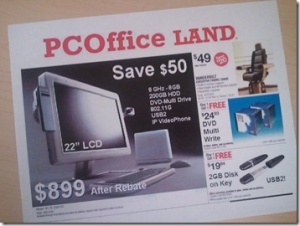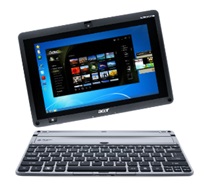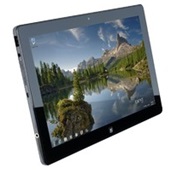A few links of interest today… a quick post as I need to get through my email. Busy week.
With Valentines around the corner, I particularly enjoyed these 16 things Calvin & Hobbes said better than anyone else http://on.news.me/zyH7yH via @moorehn
Thanks to Larry Hryb (aka @majornelson) we’re reminded what happens to the losing team’s championship shirts: http://mjr.mn/wNXkqn #SuperBowl
This great news on the Microsoft Giving Campaign: Microsoft Employees Give Back in Record Fashion: US$100.5 million in 2011 http://bit.ly/z8yEPr
My take on what the PC will look like in five years, with a nod to my son’s possible Windows PC in 2016: http://bit.ly/wFJ7Ti
Microsoft’s public statement on support for industry standards: http://bit.ly/wW1hrw, plus our blog post on Microsoft’s position and support for industry standards: http://bit.ly/zfQEtK
BuildWindows8: Good grief. We said “Media Center will definitely be part of Windows 8” in http://blogs.msdn.com/b/b8/archive/2011/09/02/reflecting-on-our-first-conversations-part-2.aspx http://pic.twitter.com/8c2IJM7U
Also from the Win8 team: Behind the scenes building Windows on ARM, “WOA”.. video demo and tons of details see post http://win8.ms/woa … lots to read about! 🙂
While we’re on the topic: CNET reported that Metro’s not just an interface to Microsoft. “It’s an ethos.” Here’s why it rules. http://cnet.co/zOoHEn
Since we’re on a roll, how about this post on Windows 8, which should be called “Alive and kicking!” 😉 via @MichaelGillett
And worth reading: “Designing Windows 8 or: How to Redesign a Religion” http://gizmo.do/A28FqP via @MPalermiti
Via toddbishop: Microsoft merges voice-response tech into 24/7 Inc., promises smarter self-serve calls http://bit.ly/xWoPiF
From Microsoft Australia: SMB Video Series: How to manage your PCs #intune http://spr.ly/6016RL9o
Via Forrester Research: Top customer experiences can come from unexpected places – what brands surprise you with their customer experience? http://bit.ly/wipkA0
From Linda Thomas: Facebook Timeline: Disliked by the Masses http://on.mash.to/zg8Ngq
Related, @marypcbuk‘s article ‘Why Windows 8 needs architectural hygiene for WOA’ http://bit.ly/yMdZBb #zdnetuk
Via danah boyd: More people live alone than at any other time in history. This is good & bad. @NYTimes oped by @EricKlinenberg: http://bit.ly/wHBsYN
Is This Living Room Big Enough for My TV? @NYTimes has some helpful hints: http://nyti.ms/yC5cq8
Related, this from Om Malik on why smartTVs are going to be the next net neutrality battle ground. http://gigaom.com/broadband/smart-tvs-cause-a-net-neutrality-debate-in-s-korea/
From Eric Ligman, Microsoft Unveils Microsoft Dynamics CRM Mobile http://ligman.me/AnTpdZ #msuspartner #mspartner via @kevinmachayya
Alan Moore explains the Guy Fawkes mask, Occupy, Anonymous and anti-ACTA protests http://dlvr.it/1BLFZr
The erudite Michael S. Kaplan blogs: The oft-repeated ‘What version of Unicode do we/will me support?’ question, Redux http://blogs.msdn.com/b/michkap/archive/2012/02/06/10264279.aspx
Vinod Khosla: Lies, Damned Lies, and Medical Science – Magazine – http://snip.it/s/1qzl
The average price of a home in Menlo Park has already gone up from $1.8m to $2m ahead of Facebook’s IPO http://www.bloomberg.com/video/86075210/
From Roger von Oech, creativity strategy: For a fresh approach: “Change Viewpoints.” Fun story at: http://j.mp/cwp106
Via Fast Company: With “Lillyhammer” @Netflix Wants To Destroy Traditional TV, Get You “Hooked” On All-At-Once Watching http://is.gd/cbgz4C by @AustinCarr
By SAI: The Least Stealthy Startup In The Valley Has Officially Launched $CSCO by @Julie188 http://read.bi/wTZK9m
From Techland: Study suggests that Apple mobile apps are more crash-prone than Android apps | http://ti.me/AsgiNP
From VentureBeat: Dylan’s Desk: What it takes to compete with Silicon Valley http://wp.me/p1re2-1Bpm
In the Wall Street Journal: Are French parents superior? This author says while American’s fret, French raise happy children without the anxiety. http://on.wsj.com/yHEZQx
Just a reminder: Google+ ‘is not a social network’ http://www.telegraph.co.uk/technology/google/8880977/Google-is-not-a-social-network.html via @Telegraph. Confused with a movie of the same name
Via Bruce Temkin: Thinking about a Chief Customer Officer role within your company? Check out my new post: http://experiencematters.wordpress.com/2012/02/10/advice-for-chief-customer-officers/ #cx custexp
Cisco’s Vision: Top 5 Future Technology Trends http://ow.ly/8BuxN
Harvard Biz Review: America’s Next Top Engineer: She Needs Your Models http://s.hbr.org/AmXFRt
Via Dare Obasanjo: the difference between solving problems in real life versus school – http://i.imgur.com/Lus4Y.png #programming
How can we capitalize on #cloud computing to strengthen the #EU economy? http://om.ly/BlxCI from Microsoft Europe
More on Kinect for Windows: Game on for commercial use http://bit.ly/zYxOEn
Tarran Vaillancourt, Why I love #Windows7 – it can help employees be more productive while achieving better work-life balance http://bit.ly/wFu7vh “Ohmmm” 🙂
W3C co-chair: Apple, Google power causing Open Web crisis (@stshank / CNET) http://news.cnet.com/8301-30685_3-57373764-264/web-leader-apple-google-power-causing-open-web-crisis/ http://www.techmeme.com/120210/p21#a120210p21
Here’s How Microsoft Could Sell Lots Of ARM Tablets To Big Companies (MSFT) http://read.bi/yZKHKk, via Everything Microsoft
Also courtesy Vinod Khosla: The Future of Peer Review – http://snip.it/s/1qqx
From Jessica Vascellaro, With 5.2% of PC shipments and 13.9% of smartphone shipments globally here’s one way Apple wants to close the gap. http://on.wsj.com/yHSOa0
Thanks to David Aronchick for the pointer on this great essay… may you all never have this problem: http://bit.ly/yHvYYM How to Minimize Politics in Your Company via @bhorowitz
Steve Wildstrom reports Why Tablets are Important For eCommerce | http://techpin.io/zCr0Rn The Daily @Techpinion
And to round it out, from @tgrumm: Hilarious – Will Ferrell introducing da Bulls http://bit.ly/yXLgv8
Did you see ‘Walk Off the Earth’ cover song that got 50,000,000 views AND a record deal? http://on.mash.to/y2LBmA
Tags: articles, what I read, twitter.
Also available at http://bit.ly/Ao47XF

 The other day I
The other day I  All good things to consider in the PC of five years in the future. Perhaps even this fall, given some of the advances we see today, particularly when it comes to touch input and speech recognition, plus the incredible shift to the cloud (for storage and services).
All good things to consider in the PC of five years in the future. Perhaps even this fall, given some of the advances we see today, particularly when it comes to touch input and speech recognition, plus the incredible shift to the cloud (for storage and services).
